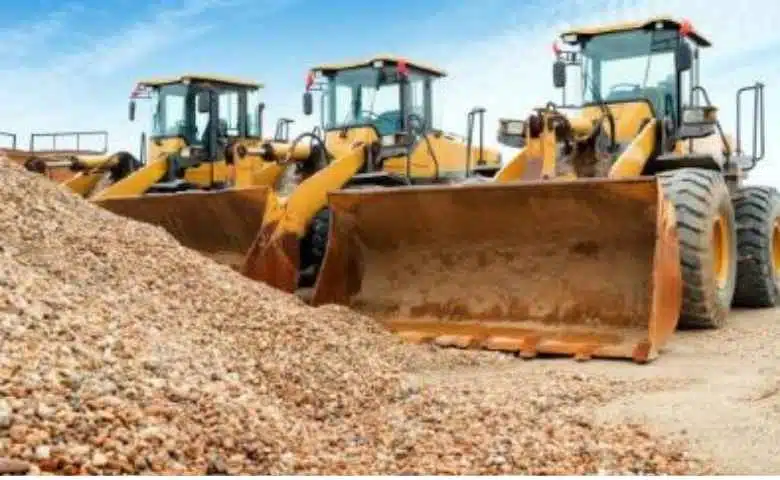Last Updated on August 19, 2025 by Admin
Every construction manager knows this frustration. You need that specific drill for the morning job, but nobody knows where it went. Your crew waits while someone drives back to the shop to grab another one. Meanwhile, the project timeline slips and costs climb.
Lost tools and equipment are a common challenge on busy construction sites. With so many moving parts, it’s easy for items to get misplaced or overlooked. But tracking every hammer, saw, or piece of heavy equipment doesn’t have to slow your team down.
Here are proven strategies that keep your tools where they belong and your projects moving forward:
1. Take Advantage of Metal Equipment Tags for Durability
Metal equipment tags are one of the simplest and most effective ways to keep track of assets. Unlike paper labels or plastic stickers, metal tags are built to last in harsh conditions. They withstand dirt, heat, water, and heavy handling, making them ideal for construction environments where tools and machines take a beating.
These tags often include engraved or stamped numbers, barcodes, or quick response codes you can scan for tracking. Even when paint chips or surfaces wear down, the markings remain clear.
Many construction teams operating heavy-duty assets, such as power tools or machinery, rely on metal equipment tags for reliable identification that won’t fade over time. This durability means crews spend less time replacing labels and more time focusing on their construction work.
2. Use Barcode Systems for Easy Scanning
Barcodes remain a practical and affordable solution for construction sites. Each item receives a unique label you can scan with a handheld device or smartphone. This creates an instant record of where the tool is, who last used it, and when it was checked out.
The system is quick, which keeps crews moving. Instead of filling out paperwork, workers scan and go. Managers gain visibility over their inventory, reducing confusion and loss and ensuring construction equipment is available when needed.
3. Centralize Data With Asset Management Software
While tags and trackers help identify assets, software ties everything together. Construction asset management platforms record tool use, track maintenance schedules, and store availability details in one place. Teams can access the system before heading to the site to ensure equipment is ready.
Centralization reduces miscommunication. Instead of juggling paper logs, emails, or verbal updates, everyone checks the same system. This clarity improves planning, prevents double-booking, and streamlines day-to-day operations.
4. Implement Check-In and Check-Out Stations
A designated station for tools ensures you can track them in an orderly way. Workers should sign items in and out with a simple asset register, tablet, or scanning device. The process is straightforward and builds accountability.
Tools are more likely to be returned on time when each person is responsible for what they borrow. Managers can also track demand, noticing which items are most frequently used or misplaced. This information helps with purchasing and planning for future projects.
5. Invest in GPS Tracking for Heavy Equipment
Heavy machinery represents a major investment, and losing track of it can be costly. Global positioning system (GPS) tracking solves this issue by providing live location data. Site managers can check the status of excavators, trucks, or bulldozers through dashboards or mobile apps.
GPS also helps protect against theft. You can set alerts if a machine moves outside designated boundaries. Beyond asset security, these systems allow for better scheduling because managers always know which construction equipment is in use and which is available. That visibility keeps projects moving efficiently.
6. Train Crews on Asset Responsibility

Technology and systems only work if people use them correctly. Training crews on asset responsibility is essential. Workers need to know how to scan tools, return them properly, and report issues immediately.
Consistent training fosters good habits. When team members understand how asset management benefits the entire team, they become more committed to following procedures. Clear expectations and reminders during safety meetings or shift briefings keep the system strong.
7. Create a Standardized Storage System
Well-organized storage saves time and reduces stress. Lockers, labeled bins, or rolling tool carts help ensure every item has a designated place. Crews quickly know where to return tools, which makes them easier for the next person to find.
This system also supports construction asset tracking technology. Barcodes and RFID tags are easier to manage when tools are stored properly. A tidy site reduces wasted minutes spent searching for misplaced gear and keeps the project moving steadily.
8. Schedule Regular Equipment Audits
Even with reliable systems, regular audits are a smart practice. Audits confirm that records match reality and help managers identify problems early. They can be performed weekly, monthly, or at key project points.
These checks also provide insights into usage patterns. Managers learn which tools are underused, which break down often, and which need replacing. This information leads to better budgeting, purchasing decisions, and long-term planning.
9. Adopt RFID Tags for Real-Time Location
Radio frequency identification (RFID) takes tracking to another level. With RFID, small tags are attached to tools or machines, and sensors installed around the job site pick up their signals. This setup provides automatic, real-time data on the location of assets.
RFID is especially valuable on large job sites where equipment moves frequently. Instead of relying on manual updates, the system gives continuous data that saves time and prevents mistakes. Workers no longer need to search for misplaced items, and managers can focus on keeping the schedule on track.
Conclusion
Construction projects move fast, and small delays can quickly add up to big problems. Missing tools and misplaced equipment slow progress, but you can avoid these setbacks with the right strategies. From durable metal tags to advanced GPS tracking, each method supports smoother operations and more efficient asset management. The result is less wasted time, stronger accountability, and projects that finish on schedule.
Related Posts:
- GPS and Its Applications in the Construction Industry
- Here’s How Good Plumbing Enhances Home Value
- Where Can I Buy Affordable GPS Tracking Devices for My Fleet?
- Property Asset Management Job Description and Salary


